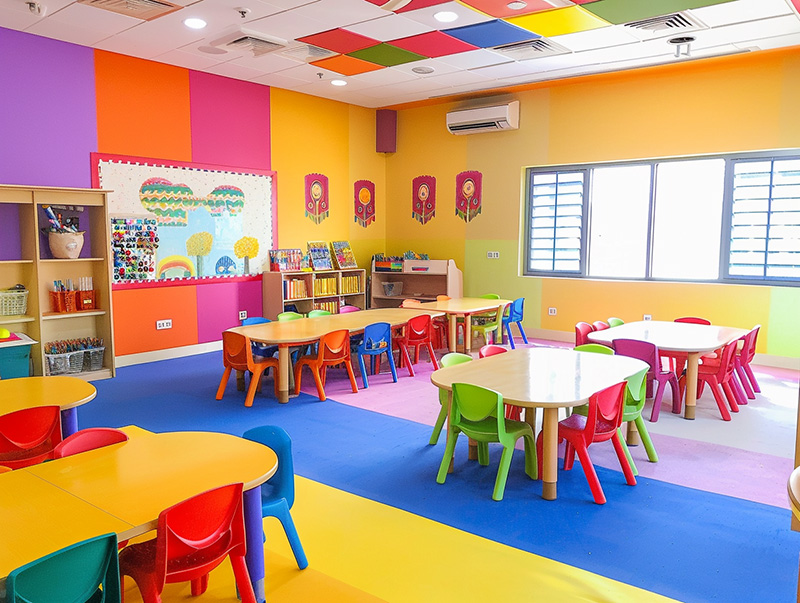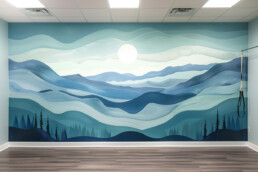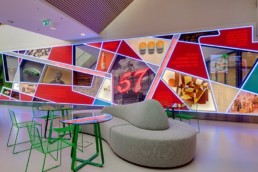In the competitive landscape of educational institutions, where first impressions matter more than ever, the power of aesthetics cannot be underestimated. Picture this: a whimsical wonderland where creativity knows no bounds, colors dance harmoniously, and every nook whispers promises of growth and discovery. This isn’t just a dream but a tangible reality that savvy nursery owners are embracing to not only captivate young minds but also to entice discerning parents searching for the perfect educational haven for their little ones. As we delve into the intriguing realm of how attractive interiors are transforming nursery enrollments in Dubai, prepare to witness the alchemy of design impact on marketing strategy unfold before your eyes. The carefully curated spaces, infused with elements of playfulness and functionality, serve as silent ambassadors of trust and quality. It’s not simply about filling a room with pretty objects; it’s about crafting an immersive experience that resonates with both the innocence of childhood and the aspirations of parenthood. Stay tuned as we unravel the secrets behind this innovative approach that is reshaping the very essence of early education.
 Utilizing Color Psychology to Create Stimulating Environments
Utilizing Color Psychology to Create Stimulating Environments
Color has a profound impact on our emotions and can greatly influence our mood and behavior. In the context of nursery interiors, the strategic use of color can create a stimulating environment that engages young minds and fosters creativity. By understanding the principles of color psychology, nursery owners in Dubai are able to design spaces that not only appeal to children but also leave a lasting impression on parents.Warm colors such as red, orange, and yellow are known to evoke feelings of energy and excitement. These hues can be incorporated into play areas or activity corners to create an atmosphere of enthusiasm and curiosity. On the other hand, cool colors like blue and green have a calming effect and can be used in quiet spaces or nap areas to promote relaxation and tranquility.In addition to choosing the right colors, it is important to consider their intensity and saturation. Bright, vibrant shades can be used as accents or focal points to draw attention and create visual interest. On the other hand, softer pastel tones can be used for larger surfaces such as walls or furniture to create a soothing backdrop.
Incorporating Nature-Inspired Elements for Calm and Connection
Nature has a way of captivating our senses and instilling a sense of calmness within us. By bringing elements of nature into nursery interiors, educators are able to create an environment that promotes connection with the natural world while providing a serene space for children to learn and grow.One way this can be achieved is through the use of natural materials such as wood or bamboo for furniture or flooring. These materials not only add warmth and texture but also create a sense of grounding in the space. Additionally, incorporating plants or nature-inspired artwork can further enhance the connection with nature.
Creating Flexible Spaces to Adapt to Dynamic Educational Needs
Education is constantly evolving, with new teaching methods and approaches being introduced regularly. In order to stay relevant in this ever-changing landscape, nursery interiors need to be flexible and adaptable to accommodate different educational needs.One way to achieve this is by incorporating modular furniture that can be easily rearranged to create different learning zones. This allows educators to quickly transform the space to suit specific activities or teaching styles. Additionally, having ample storage solutions ensures that materials and resources can be easily accessed and organized.
Collaborating with Artists and Artisans for Bespoke Decor Elements
To truly create a unique and memorable nursery environment, many nursery owners in Dubai are turning to local artists and artisans for bespoke decor elements. By collaborating with these talented individuals, nurseries are able to infuse their spaces with a sense of authenticity and creativity.This could involve commissioning custom murals or artwork that reflect the values and ethos of the nursery. It could also involve sourcing one-of-a-kind furniture pieces or decorative items that add a touch of whimsy and personality to the space. By supporting local artists, nurseries not only enhance their interiors but also contribute to the growth of the creative community.
Measuring Success: Tracking Enrollment Growth and Parental Feedback
While attractive interiors can certainly make a strong first impression, it is important for nursery owners to track enrollment growth and gather parental feedback to measure the success of their design efforts. This data provides valuable insights into how well-designed interiors impact parental decision-making and ultimately contribute to increased enrollments.Tracking enrollment growth allows nursery owners to assess whether their design strategies are effective in attracting new families. By comparing enrollment numbers before and after implementing design changes, they can determine if there has been a significant increase in interest from parents.Additionally, gathering parental feedback through surveys or interviews provides valuable insights into how parents perceive the nursery’s interior design. This feedback can help identify areas for improvement or highlight aspects of the design that resonate particularly well with parents.In conclusion, attractive interior designs play a crucial role in increasing nursery enrollments in Dubai. By utilizing color psychology, incorporating nature-inspired elements, creating flexible spaces, collaborating with artists and artisans, and measuring success through enrollment growth and parental feedback, nursery owners can create spaces that not only captivate young minds but also build trust with parents. These well-designed interiors serve as a powerful marketing strategy that sets nurseries apart from their competitors and establishes them as leaders in early education.




